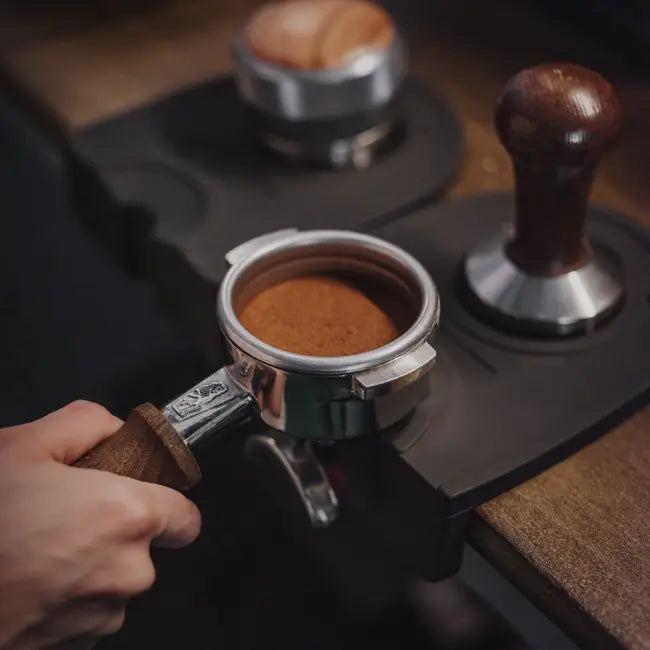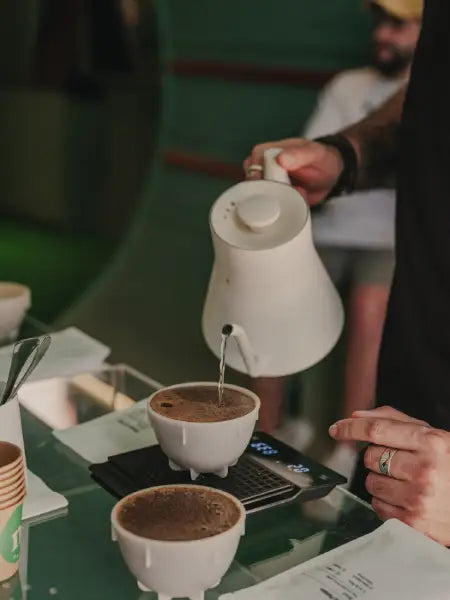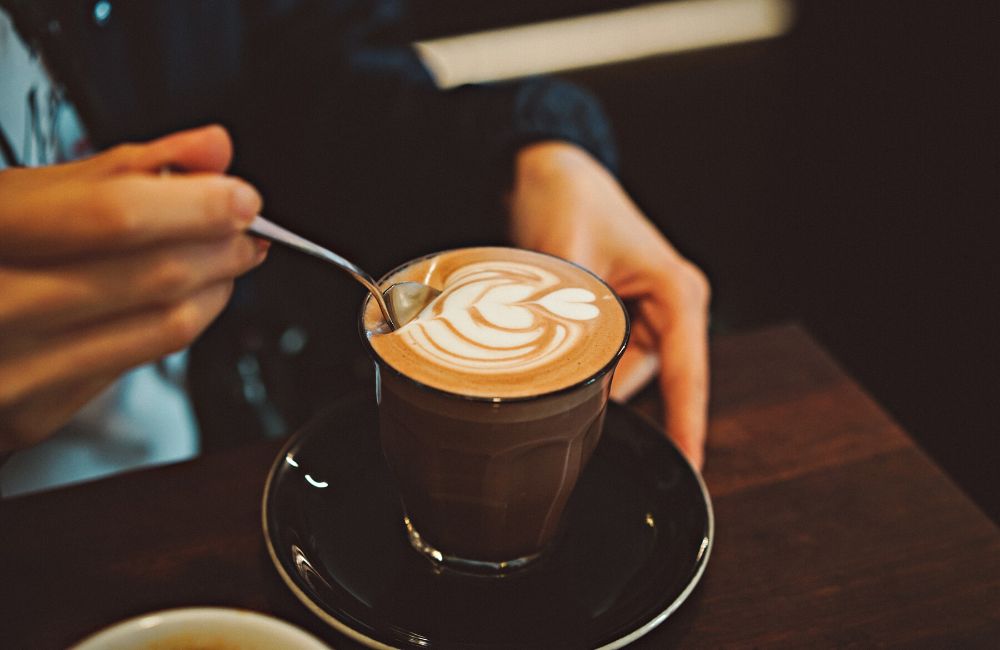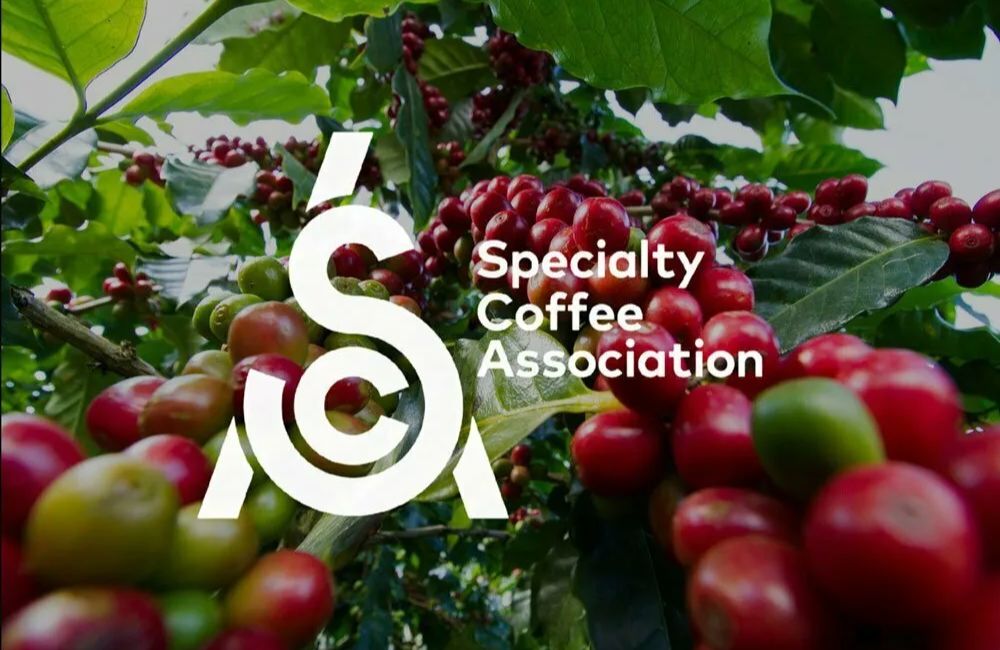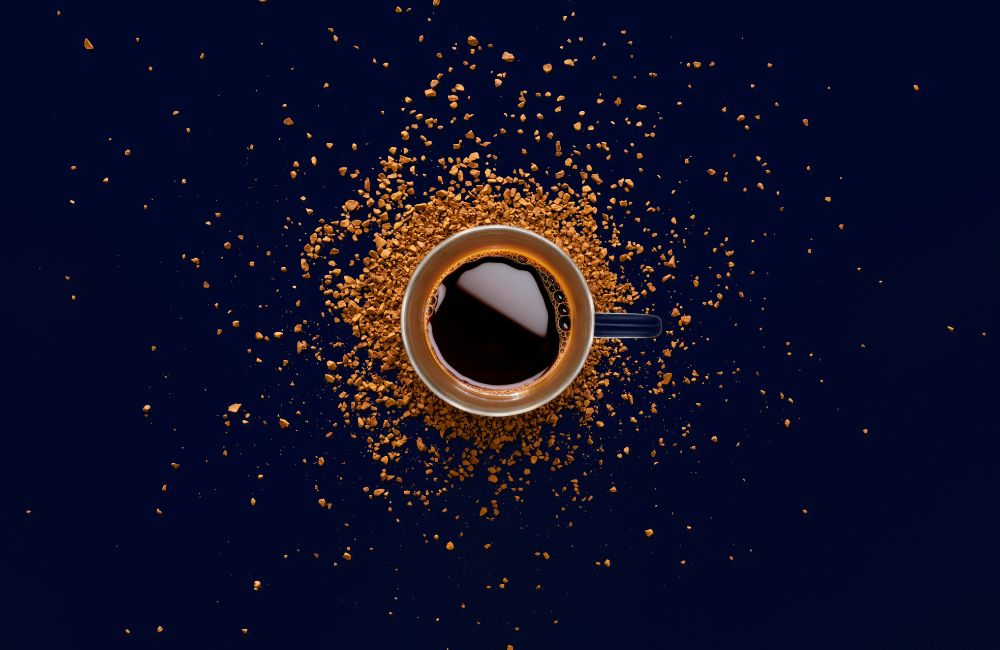¡Un café con leche!
¡Un café con leche! Probablemente sea una las expresiones que más escucha cualquier persona que trabaja en una cafetería. Y, en principio, es fácil de entender. Pero ¿qué quiere decir?
Cuando una persona pide un café con leche, y usa esas palabras (en lugar de otras, como un americano, o un cortado) está indicando que quiere una bebida con unas características definidas. Espera un sabor, un aroma y una textura más o menos concreta. También busca un efecto psicoactivo y un sabor distintivo si se trata de un cafe de especialidad.
Para poder responder a esas peticiones de forma satisfactoria debe de existir un lenguaje compartido entre el emisor del mensaje -es decir, quien pide- y el receptor -en este caso el barista-. Por eso en este post vamos a exponer qué es y cómo hacer café con leche. 
Para una comunicación correcta en un cafetería debe de existir un lenguaje compartido
El lenguaje posibilita la comunicación
El lenguaje es la herramienta que tenemos para comunicar a los demás nuestras necesidades, deseos, inquietudes y miedos. Para que dicha comunicación sea posible es necesario tener un lenguaje común.
Y ese es el propósito de este post. No establecer un lenguaje, no pretenderíamos tal cosa, pero sí sentar unas bases para la comunicación en el contexto de una cafetería de especialidad o la preparación de café.
Así, la próxima vez que pidas o te pidan un café con leche -o un cortado, latte, etc.- podrás afirmar que sabes a qué se refiere. Esto es muy importante, puesto que, si no sabemos a que nos referimos, si no sabemos qué queremos y cómo pedirlo, tampoco sabremos argumentar porqué no queremos otra cosa.
Sentando las bases I: la ortodoxia del café (solo)
La base de todas las formas de servir una bebida cafeinada es la misma: café solo. Sin leche, sin azúcar, sin ningún otro añadido extra. Esta es la forma ortodoxa de tomar café. Bien sea que hagamos una extracción con una máquina de espresso o de filtro. La bebida que obtendremos será el resultado de extraer del café los compuestos solubles.
El café está compuesto en un 30% de solubles. Estos solubles son los que el agua extrae al entrar en contacto con el café y lo que le proporciona las características gustativas, aromáticas y psicoactivas.
De este 30% de solubles posibles, de forma general, nosotros solo querremos disolver entre un 18% y un 24%. Esto es lo que se conoce como el TDS (sólidos disueltos totales, por sus siglas en inglés) Si te interesa conocer mejor la teoría de la extracción, puedes leer este post.
Dependiendo de la forma de extracción, bien sea con una máquina espresso, un filtro, o en cata, etc. tendremos en cuenta diferentes variables para obtener este porcentaje. Y, dependiendo de la cantidad final de bebida resultante de la extracción, este porcentaje tendrá unas características diferentes.
Es decir, en un filtro cuyo resultado final son 200 ml de café, este 20 por ciento de solubles estará más diluido que en un espresso que son 40 ml (aprox. 40 gr). Esto tiene como resultado un perfil organoléptico diferente en cada caso.
De las diferentes formas de extracción del café, el espresso es el que tradicionalmente se ha usado como la base de bebidas cafeinadas con leche.

El espresso ha sido tradicionalmente la base de las bebidas cafeinadas con leche
Sentando las bases II: el espresso
El espresso es un método de extracción de los solubles del café por calor y presión. Las variables para tener en cuenta son, en primer lugar, el café en sí (origen, proceso, etc), la molienda, la cantidad de café, la temperatura del agua, la presión de la máquina, el tiempo de extracción y la cantidad de bebida resultante (expresada en gr.)
Como no es nuestra intención desarrollar aquí la teoría de extracción del espresso, usaremos como referencia una receta estándar: 18 gramos de café en una ratio de 1:2,22, lo que nos daría como resultado una bebida de 40 gr.
La ratio se obtiene de dividir la cantidad de bebida resultante (40 gr) entre la cantidad de café que hemos utilizado (18 gr). La operación sería 40/18 = 2,22.
A esta extracción se le llama, en muchas ocasiones, un espresso doble. Se le llama así porque usaremos el porta filtros doble para hacerla. Y un espresso single sería el resultado de dividir esta extracción en dos (20 gr de bebida en cada taza). Con esto como base, podemos establecer la siguiente guía:
- Single espresso: 20 gr de café resultantes de una extracción 1:2,22
- Doble espresso: 40 gr de café con una extracción 1:2,22
- Americano: 40 gr de café más agua (entre 40 gr y 160 gr)
- Café con leche: 40 gramos de café más leche en diferentes proporciones
Hemos de ser conscientes de que la base de todas las bebidas es el espresso. Esto es lo que definirá el resto.

Dependiendo de la proporción de café y leche las bebidas reciben un nombre diferente
Sentando las bases III: el café con leche
El café con leche es un nombre genérico que podríamos utilizar para todas las bebidas a base de espresso y leche. (¡Ojo! En España, el café con leche también se refiere a la bebida resultante de una proporción concreta de café y leche, lo que en otros sitios se llama un capuchino).
Dependiendo de la proporción entre leche y café, es decir, de la cantidad de café y la cantidad de leche, obtendremos bebidas a las que se les da un nombre diferente. Esto da como resultado un perfil gustativo y de textura diferente. Si alteramos una de estas medidas (bien sea la del espresso o la cantidad de leche) estaremos alterando la bebida resultante.
Utilizaremos la receta de espresso que hemos expuesto más arriba como la base de todas las mezclas con leche que explicamos a continuación.
Sentando las bases IV: los diferentes nombres del café con leche
Después de toda esta teoría pasemos a la práctica. A establecer los principios de una comunicación eficaz en el contexto de una cafetería de especialidad o la preparación de café.
Esto es: ¿a qué nos referimos cuando pedimos o preparamos las siguientes bebidas con café + leche?
Generalmente, a menor cantidad de leche más pronunciado será el sabor del café, y viceversa. Por lo tanto, lo que hemos de saber es que, aunque no sepamos exactamente que quiere el cliente, nos podemos hacer una idea bastante acertada de lo que espera.
- Café cortado: 40 gr de espresso “cortado” + entre 5 gr y 40 gr de leche.
- Flat White: 40 gr de espresso + entre 40 gr y 160 gr de leche.
- Café con leche o capuchino: 40 gr de espresso + entre 130 y 180 gramos de leche.
- Manchado o latte: 40 gr de espresso + entre 180 gr y 240 gr de leche (la leche está “manchada”). El nombre de este último, leche manchada vs latte, dependerá del país donde nos encontremos, pero esencialmente es lo mismo

El Flatwhite es un bebida muy popular en las cafeterías de especialidad
Sentando las bases V: la variedad es riqueza
Como se puede observar las medidas no son exactas (excepto la del espresso). Esto da flexibilidad al barista para ajustar la demanda del cliente al café con el que trabaja. Un café cortado elaborado con un espresso de un origen concreto puede necesitar más o menos leche para ofrecer la experiencia de un cortado que otro de otro origen.
También se debe a que en el mundo del café de especialidad hay que dejar espacio para la subjetividad. Al fin y al cabo, es cuestión de gustos.
Existen otras bebidas realizadas a base de espresso y leche, pero creemos que estas son las más comunes; esta lista se podría aumentar en otras 10 o 20 bebidas con ligeras variaciones, pero creemos que el concepto queda claro. También, si aparte de café y leche se le añade algo más, el nombre puede cambiar. Por ejemplo, en muchos sitios a un capuchino con cacao se le llama Mokka.
Si, en lugar de usar leche de vaca, utilizamos cualquier otra bebida vegetal, nada de lo anterior cambia, en teoría. Aunque deberíamos revisar cómo afecta el perfil gustativo de la bebida en concreto al resultado y hacer los ajustes pertinentes.
Sentando las bases VI: la importancia de la receta
Lo que queremos transmitir con esto son dos cosas. La primera, que en toda bebida cuya base es el café (espresso) lo más importante es el café en sí. Esto puede parecer obvio, pero es de suma importancia conocer el café con el que trabajamos y el perfil organoléptico que tiene puesto que esto definirá la bebida resultante. Puede que un café sea idóneo para mezclarlo con leche pero que no funcione en un filtro, por ejemplo.
La segunda, que a lo que estos nombres se refieren es a una experiencia gustativa, no a una elaboración concreta, que también. Es decir, que cuando el cliente pide un “cortado” no es consciente de la ratio del espresso, ni de la proporción exacta entre café y leche, y, en muchos casos, tampoco del impacto del origen del café. El cliente quiere la experiencia de un “cortado”. Es la labor de la cafetería y el barista definir la mejor forma de conseguir esto dentro de los parámetros más o menos establecidos.
Por eso es importante desarrollar recetas si queremos ser consistente en las bebidas que ofrecemos y que el cliente sepa qué es lo que puede esperar cada vez que viene a nuestro establecimiento. Y alterarlas adecuadamente en función de las variables.

Es la labor del barista interpretar la demanda del cliente para elaborar correctamente la bebida que pide
Sentando las bases VII: la importancia de las tazas
Es común que en muchas cafeterías se subestime la importancia de las tazas en las que se sirve el café. Las tazas son parte de la experiencia y es un primer indicio para el cliente de que lo que ha pedido se ha entendido correctamente.
Es decir, si un cliente pide un cortado y se lo traemos en una taza de Flat White, inmediatamente sospechará que no le hemos traído lo que había pedido. El cliente, aunque quizás no con exactitud, también tiene una idea de las proporciones. Por ejemplo, servir tres cafés con leche con la misma receta en la misma taza y llamar a uno capuchino, a otro café con leche y a otro flat white…crea confusión y la percepción de que la carta no está definida.
Además, utilizar tazas con diferentes capacidades para diferentes bebidas nos ayudará a ser consistentes en las recetas. También nos ayudará estéticamente; si el cliente pide un cortado y se lo traemos en una taza de latte, verá que la mitad está vacía y que puede que así se enfríe más rápido.
Las tazas no tienen que ser las mismas en todas las cafeterías, de ahí que también haya diferencias en las proporciones. Pero sí tienen que ser acordes a las cantidades y recetas y al concepto global que servimos.
Algunas de las marcas de tazas con las que nosotros trabajamos y que recomendamos son:
Si estás interesado y quieres obtener descuentos profesionales de hasta un 35% en estas tazas y en otros complemento cafeteros, ponte en contacto con nosotros.
Para asesoramiento o contarnos tu proyecto y ver cómo podemos colaborar, escríbenos por aquí hola@ineffablecoffee.com
Finalmente: Cómo hacer café con leche

Es importante mantener la consistencia en las cantidades y calentar la leche correctamente
Hemos visto que todo café con leche se basa en una elaboración correcta de un espresso al que se le añade leche. La medida de un café con leche dependerá de la receta que queramos elaborar. Es importante calentar la leche correctamente y tener constancia en la mezcla, algo a lo que nos ayudará tener las tazas adecuadas.
Las recetas más usuales son: el café cortado (40 gr de espresso “cortado” + entre 5 gr y 40 gr de leche) el Flat White (40 gr de espresso + entre 40 gr y 160 gr de leche), el café con leche o capuchino (40 gr de espresso + entre 130 y 180 gramos de leche), y la leche manchada o latte (40 gr de espresso + entre 180 gr y 240 gr de leche (la leche está “manchada”).
El procedimiento, de forma resumida sería:
- Elaboramos un espresso
- Calentamos la leche elegida (bien sea de vaca o vegetal)
- Mezclamos la leche con el café
La teoría es simple, tanto que la puedes hacer tú en casa. Si no tienes un máquina de espresso, te recomendamos que utilices una Cafetera Italiana o Moka, puesto que las elaboraciones de filtro pueden ser menos intensas para mezclar con leche (por la menor concentración de TDS).
En Ineffable Coffee tenemos cafés específicos para diferentes elaboraciones. Para hace un café con leche los cafés con notas a chocolate, frutos secos, vainilla o praliné suele funcionar bien. Muchos cafés colombianos suelen tener estas notas, también los brasileños, y aunque esto es una simplificación extrema -el café es más complejo que eso- te puedo facilitar elegir uno.
Así que si quieres hacer un café con leche colombiano excelente (o de cualquier otro origen) sigue estas pautas y elige un buen café, y no te podrá salir mal.

